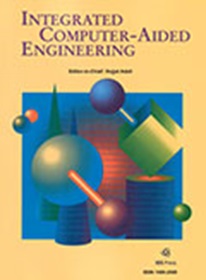Depth and thermal information fusion for head tracking using particle filter in a fall detection context
IF 5.8
2区 计算机科学
Q1 COMPUTER SCIENCE, ARTIFICIAL INTELLIGENCE
引用次数: 12
Abstract
The security of elderly people living alone is a major issue. A system that detects anomalies can be useful for both individual and retirement homes. In this paper, we present an adaptive human tracking method built on particle filter, using depth and thermal information based on the velocity and the position of the head. The main contribution of this paper is the fusion of information to improve tracking. For each frame, there is a new combination of coefficients for each particle based on an adaptive weighting. Results show that the tracking method can deal with the cases of fast motion (fall), partial occultation and scale variation. To assess the impact of fusion on the tracking process, the robustness and accuracy of the method are tested on a variety of challenging scenarios with or without depth-thermal fusion.基于粒子滤波的头部深度和热信息融合
独居老人的安全是一个重大问题。检测异常的系统对个人和养老院都很有用。在本文中,我们提出了一种基于粒子滤波的自适应人体跟踪方法,该方法基于头部的速度和位置,利用深度和热信息。本文的主要贡献在于融合信息以提高跟踪性能。对于每一帧,基于自适应加权,每个粒子的系数都有一个新的组合。结果表明,该跟踪方法可以处理快速运动(坠落)、部分掩星和尺度变化等情况。为了评估融合对跟踪过程的影响,该方法的鲁棒性和准确性在有或没有深度热融合的各种具有挑战性的场景下进行了测试。
本文章由计算机程序翻译,如有差异,请以英文原文为准。
求助全文
约1分钟内获得全文
求助全文
来源期刊

Integrated Computer-Aided Engineering
工程技术-工程:综合
CiteScore
9.90
自引率
21.50%
发文量
21
审稿时长
>12 weeks
期刊介绍:
Integrated Computer-Aided Engineering (ICAE) was founded in 1993. "Based on the premise that interdisciplinary thinking and synergistic collaboration of disciplines can solve complex problems, open new frontiers, and lead to true innovations and breakthroughs, the cornerstone of industrial competitiveness and advancement of the society" as noted in the inaugural issue of the journal.
The focus of ICAE is the integration of leading edge and emerging computer and information technologies for innovative solution of engineering problems. The journal fosters interdisciplinary research and presents a unique forum for innovative computer-aided engineering. It also publishes novel industrial applications of CAE, thus helping to bring new computational paradigms from research labs and classrooms to reality. Areas covered by the journal include (but are not limited to) artificial intelligence, advanced signal processing, biologically inspired computing, cognitive modeling, concurrent engineering, database management, distributed computing, evolutionary computing, fuzzy logic, genetic algorithms, geometric modeling, intelligent and adaptive systems, internet-based technologies, knowledge discovery and engineering, machine learning, mechatronics, mobile computing, multimedia technologies, networking, neural network computing, object-oriented systems, optimization and search, parallel processing, robotics virtual reality, and visualization techniques.
 求助内容:
求助内容: 应助结果提醒方式:
应助结果提醒方式:


